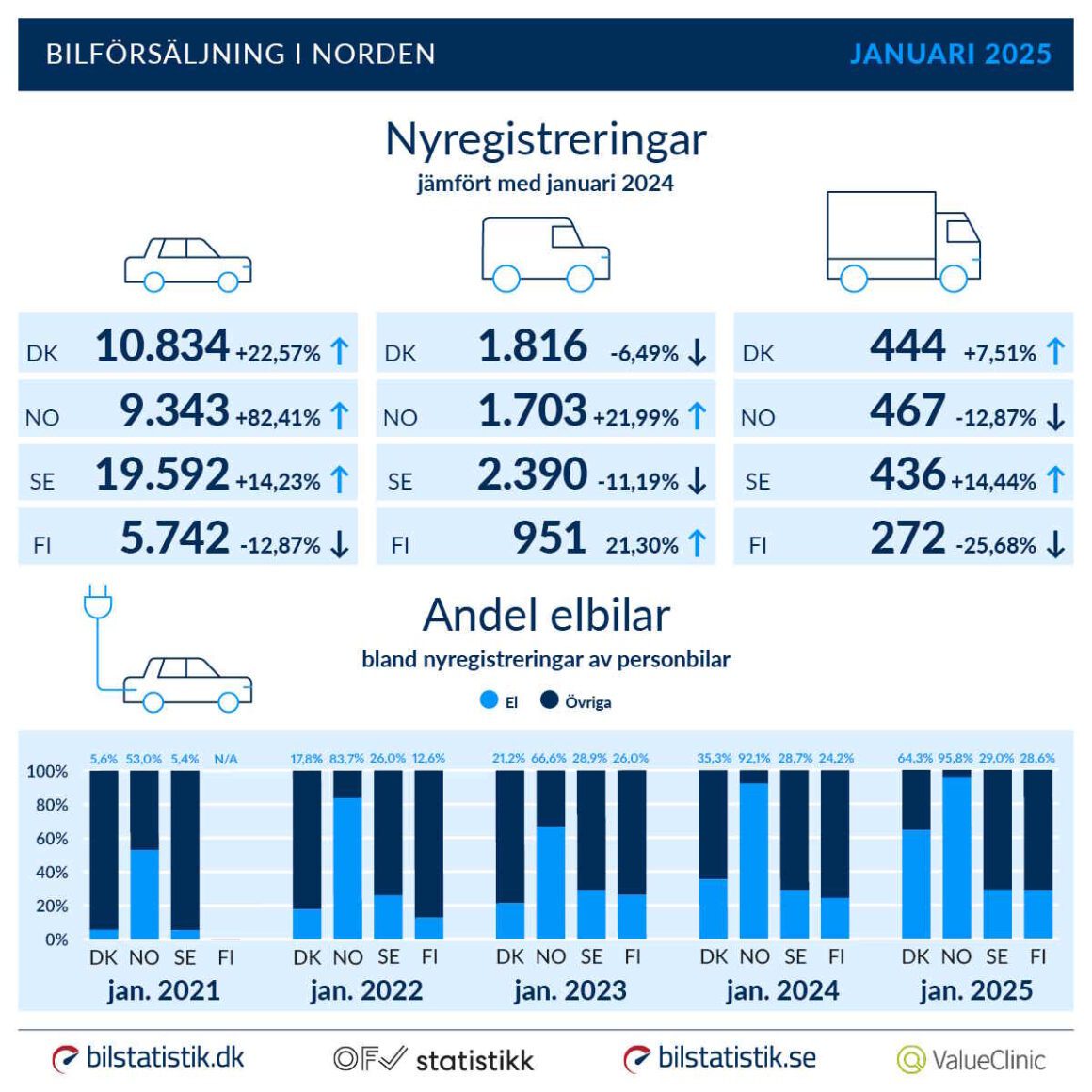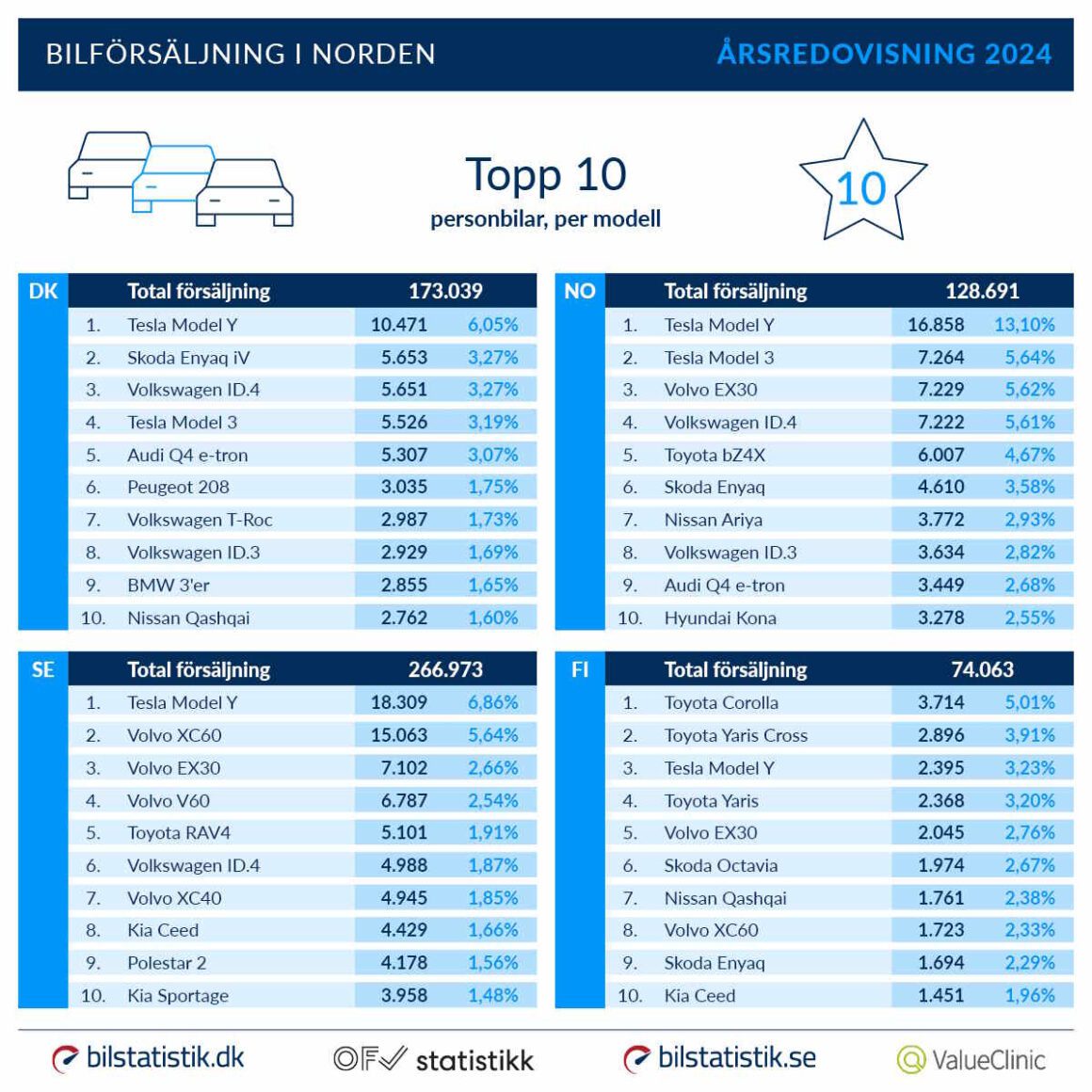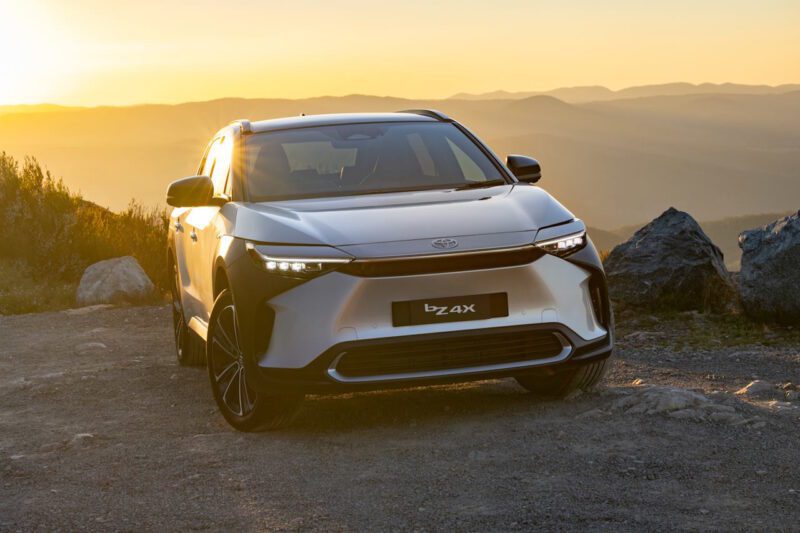The number of electric vehicles (EVs) on Nordic roads is increasing, and it’s not just Norway driving those numbers anymore, as Denmark continues to increase its share of EVs.
The new figures were collated by the Opplysningsrådet for veitrafikken (OFV), Norway’s Road Traffic Information Council, and Nordic vehicle statistics website Bilstatistik, and showed that the electrification of passenger car fleets in both Norway and Denmark continued into 2025, with both countries reporting strong EV sales figures for January.
As was reported earlier in the month, Norway recorded electric passenger car sales of 8,954 (not including a handful of hybrid variants also sold), accounting for 96 per cent of the new car market.
Norway has long been an example of how strong EV policy can drive the national vehicle electrification, and it seems that its example is starting to be replicated by its neighbours.
In Denmark, similarly decisive policies and incentives are driving a clear uptick in EV sales, with the share of electric passenger cars sold throughout 2024 accounting for 51.5 per cent of all new car sales – up from 36.3 per cent in 2023.

This momentum has rolled into 2025, with EV sales in January accounting for 64 per cent – up from only 35 per cent twelve months earlier.
The same cannot be said for neighbouring Finland and Sweden, which both saw the share of electric vehicles decline from 2023 to 2024, down to only 29.6 per cent and 33.3 per cent.

Maybe most interesting, however, has been the shift from 2024 to January in the most popular cars in each country. Though based on only a month’s worth of data, the number of Tesla models sold in each country crashed in January.
For the whole of 2024, the Tesla Model Y led all comers in Norway, Denmark, and Sweden, and was in third place in Finland. The number of Model Y models sold in both Denmark and Norway for 2024 was close to double that of its nearest competitor, reaching 10,471 and 16,858 respectively.
Meanwhile, in Sweden, a total of 18,309 Model Ys were sold in 2024, beating out the Volvo XC60.

In January, however – though only a month’s worth of numbers – Tesla sales slumped in each of the four Nordic countries.
For comparison, in Norway – the only country with available single-month sales data for December – the Tesla Model Y sold 1,932 units, and the Tesla Model 3 sold 1,067 units.
In January, however, the Tesla Model Y sold only 361 units in Norway and 324 units for the Model 3, a decline of 81 per cent and 70 per cent respectively.
Instead, the leading passenger car sold in both Denmark and Norway was the Toyota bZ4X, which saw January sales of 689 and 1,188 respectively.
Across all four Nordic countries, for January, only Denmark and Norway saw the Model Y mange to remain in the top 10 of all car sales, selling only 639 units between the two countries. In Denmark, Tesla fell by 50 per cent compared to January 2024, falling back to 12th in terms of total number of new car sales for the month.
Andrée Peters, the marketing manager at bilstatistik.se, said of Tesla’s performance in Sweden that “many potential buyers [may be] waiting for the new Model Y, which begins deliveries in March,” before adding: “But it is also possible that external factors are influencing purchasing behaviour.”
Interestingly, leading the way in Sweden was the ethanol-converted Subaru Outback, according to Peters, with 1,656 units.
Joshua S. Hill is a Melbourne-based journalist who has been writing about climate change, clean technology, and electric vehicles for over 15 years. He has been reporting on electric vehicles and clean technologies for Renew Economy and The Driven since 2012. His preferred mode of transport is his feet.


